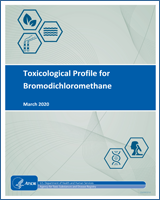| Human (urine samples evaluated in Salmonella assay) | Reverse mutations (Ames assay) | − |
Kogevinas et al. 2010
|
| Human (peripheral blood lymphocytes; whole-body exposure in indoor pool) | DNA damage (comet assay) | − |
Kogevinas et al. 2010
|
| Rat (single gavage dose of 0.3 or 0.6 mM/kg in deionized water or 0.25% emulphor; 0.6–2.4 g/L in drinking water for 2 or 5 weeks) | DNA damage (single strand breaks) | − |
Geter et al. 2004
|
| Rat (single gavage dose of 1.5 mmol/kg in 4% emulphor) | DNA damage (single strand breaks) | − |
Potter et al. 1996
|
| Rat (single gavage dose of 458 mg/kg) | DNA damage in kidney cells (single strand breaks) | + |
Robbiano et al. 2004
|
| Rat (single gavage dose of 135 or 450 mg/kg in methylcellulose) | Unscheduled DNA synthesis in liver cells | − |
Stocker et al. 1997
|
| Human (peripheral blood lymphocytes; whole-body exposure in indoor pool) | Micronucleus test | + |
Kogevinas et al. 2010
|
| Human (exfoliated urothelial cells; whole-body exposure in indoor pool) | Micronucleus test | − |
Kogevinas et al. 2010
|
| Rat (single gavage dose of 458 mg/kg) | Micronucleus test in kidney cells | + |
Robbiano et al. 2004
|
| Mouse (inhalation exposure to 1–150 ppm 6 hour/day for 7 days or 0.5–30 ppm 6 hours/day, 7 days/week for 3 weeks) | Micronucleus test in bone marrow and peripheral blood | (+) |
Torti et al. 2002
|
| Rat (bone marrow; intraperitoneal) | Chromosomal aberrations | + |
Fujie et al. 1990
|
| Rat (bone marrow; gavage in water) | Chromosomal aberrations | (+) |
Fujie et al. 1990
|
| Mouse (50 or 100 mg/kg/day via gavage in corn oil for 4 days) | Sister chromatid exchange in bone marrow cells | + | Morimoto and Koizumi 1983; Tucker et al. 1993 |
